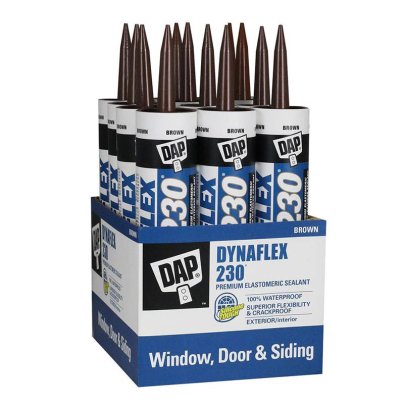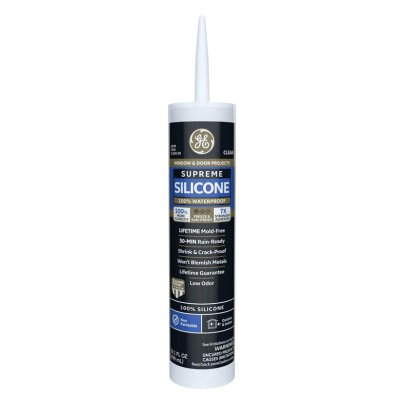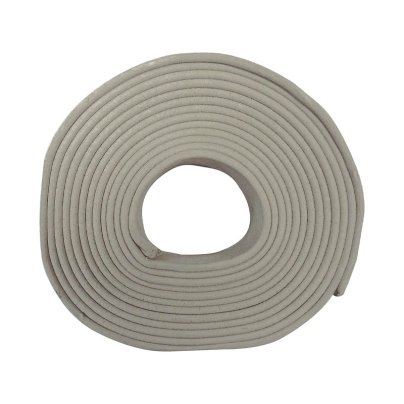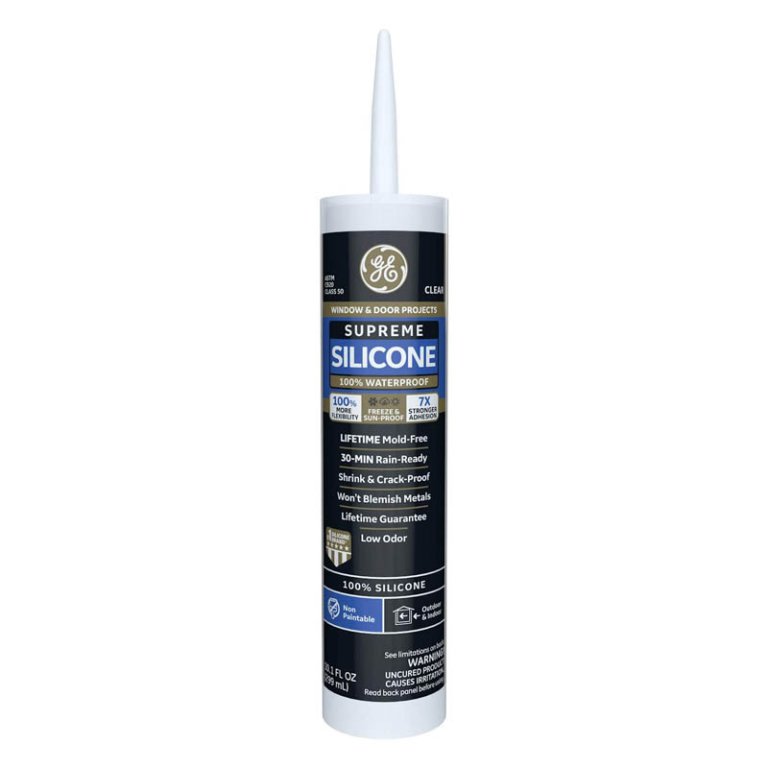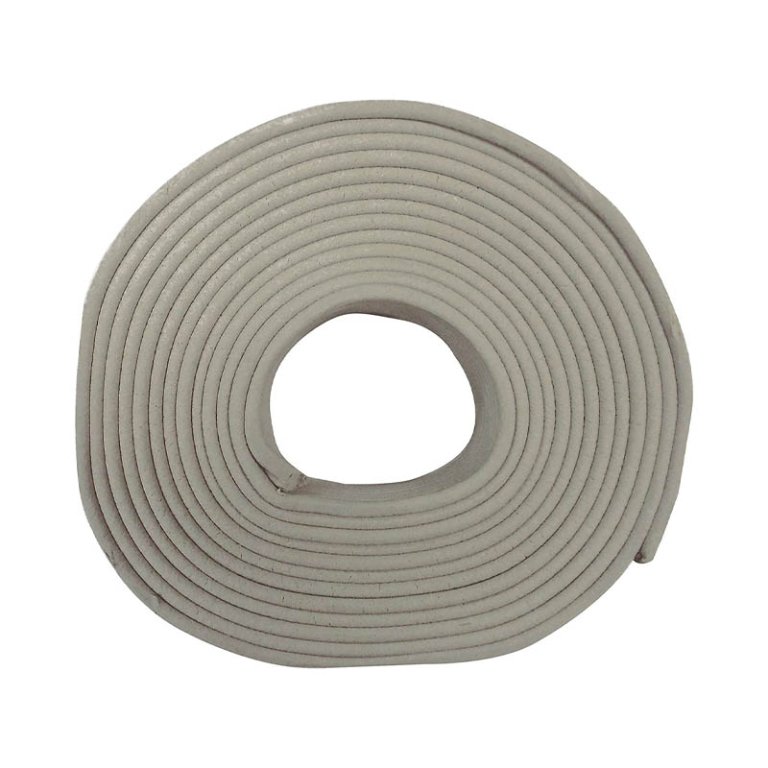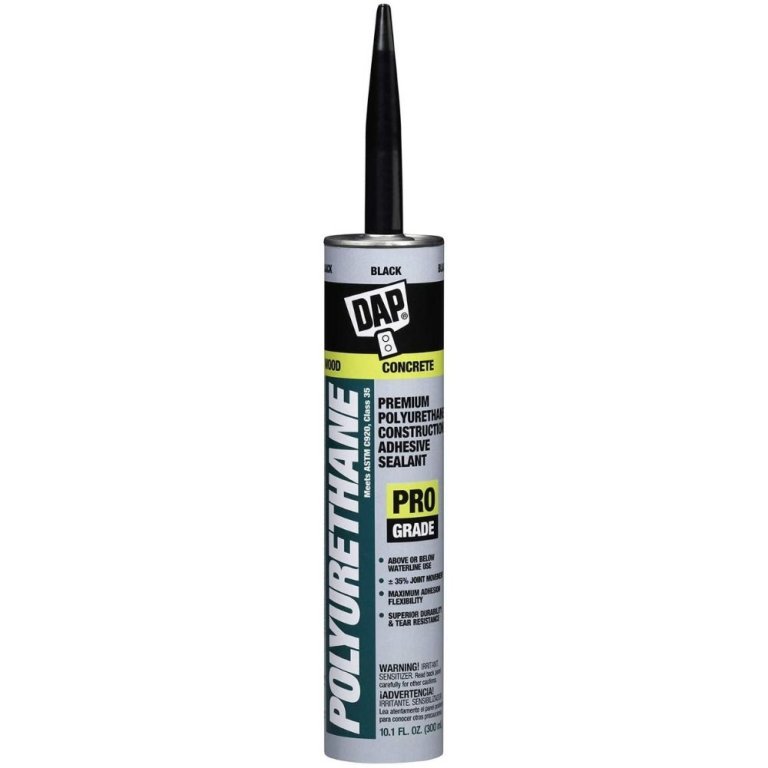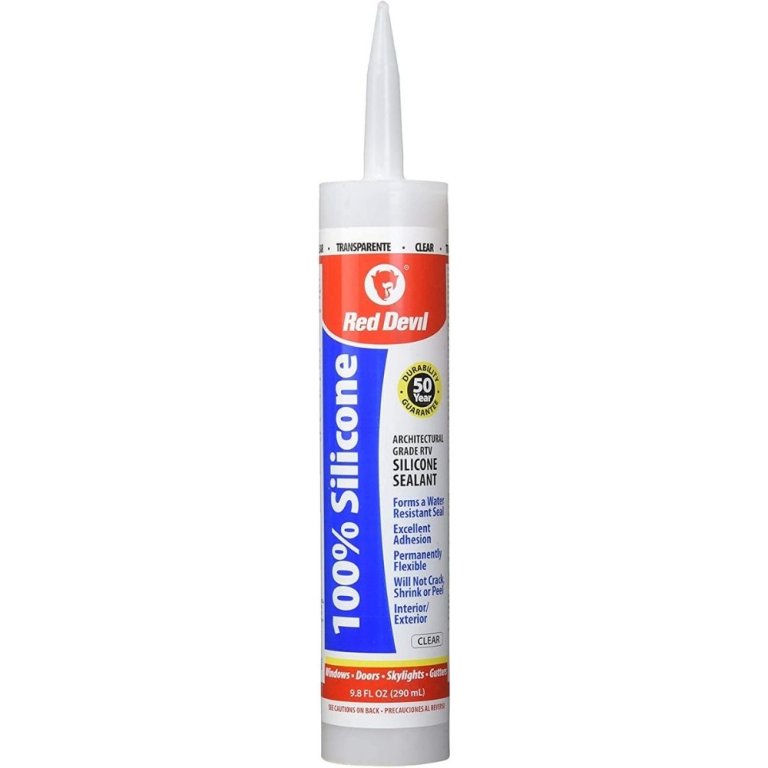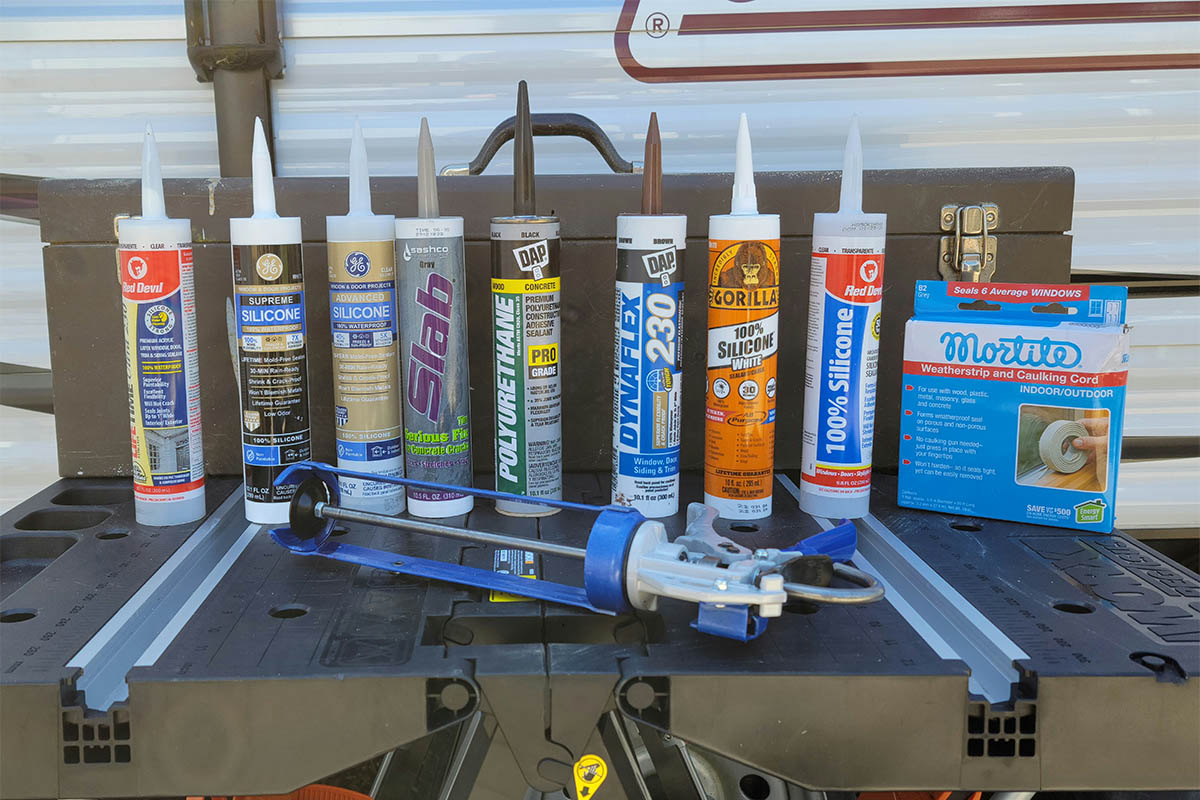
We may earn revenue from the products available on this page and participate in affiliate programs. Learn More ›
Exterior caulk is a thick, viscous solution that comes in a long tube. Applied with a caulking gun, it’s an easy-to-use and inexpensive tool to fix a variety of cracks and breaks around the exterior of a home. It’s important to find the best caulk to fit the DIY task, so we gathered top caulking products and tested them around our homes to come up with this list of the best exterior caulk by category. Our favorite was the DAP Dynaflex 230 Premium Elastomeric Sealant, which is easy to apply, resists cracking, and, best of all, works on most wood materials.
Exterior caulk is designed to seal seams in windows, doors, siding, gutters, brick, concrete, and roofing tiles to ensure that a home remains waterproof and pests stay out. The best outdoor caulk for a home depends on the areas that need sealing, the material receiving the caulk, the size of the crack or gap that needs filling, and whether the caulk needs to be paintable or available in a premade color. Most importantly, the product needs to be high quality if it’s going to protect the home. To help with choosing the best exterior caulk, we consulted experts and performed hands-on testing of the following products.
- BEST OVERALL: DAP Dynaflex 230 Premium Elastomeric Sealant
↓ Jump to Review - RUNNER-UP: GE Supreme Silicone Window & Door Sealant
↓ Jump to Review - BEST BANG FOR THE BUCK: Frost King Mortite Fingertip Caulking Cord
↓ Jump to Review - BEST FOR CONCRETE: Sashco Slab Concrete Crack Repair Caulk
↓ Jump to Review - BEST FOR WINDOWS AND DOORS: GE Advanced Silicone 2 Window & Door Sealant
↓ Jump to Review - BEST FOR SIDING: Gorilla Waterproof Caulk & Seal 100% Silicone Sealant
↓ Jump to Review - BEST FOR BRICK: Red Devil Lifetime Ultra 230 Premium Acrylic Sealant
↓ Jump to Review - BEST FOR ROOFS: DAP Polyurethane Construction Sealant
↓ Jump to Review - BEST FOR GUTTERS: Red Devil 100% Silicone Architectural Grade Sealant
↓ Jump to Review
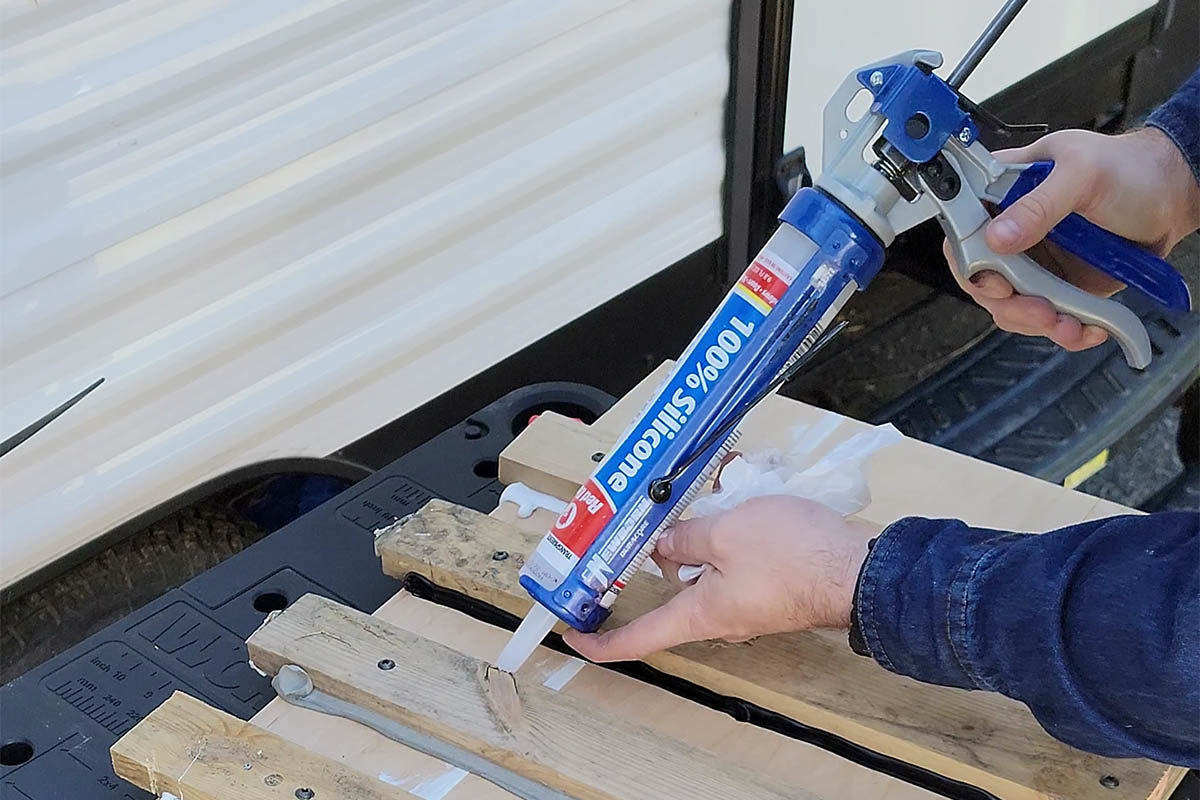
Our Top Picks
Best Overall
DAP Dynaflex 230 Premium Elastomeric Sealant
What We Like
- Paintable in 2 hours; ideal for 1-day projects
- Comes in a pack of 12
- Works on most wood materials, unlike silicone products
- Very easy to apply
What We Don’t Like
- Can be a bit runny in warmer working temperatures
Product Specs
- Type: Latex
- Drying time: 2 hours
- Paintable: Yes
This Bob Vila Approved product carries our brand’s highest level of recommendation.

Bob Vila Approved recognizes the household and DIY products that impressed us most in our real-world testing and that exemplify core values of the Bob Vila brand, including craftsmanship, innovation, and value for the dollar. Winners of this designation come recommended by our professional review team and are personally approved by Bob Vila.
DIYers looking for a paintable latex caulk that also aims to be as tough as a silicone product will want to consider DAP Dynaflex 230 caulk sealant. Buy individual tubes or this 12-pack, which has enough material for large jobs like siding or window replacements but comes in easily handled 10.1-ounce tubes.
This caulk is easy to apply, and it can seal gaps up to 2 inches wide (with a backer rod or a filler). Its formula is specially designed to resist cracking and improve flexibility over other latex-based caulks. After application, it should be ready for painting in about 2 hours.
During the test, we found the Dynaflex 230 very easy to apply. It flowed well from the tube and was easy to smooth with a tool. It was a little runnier than many of the other caulks, and it did take a full 2 hours to firm up, but it performed well.
What our tester says: “Since silicone doesn’t typically mix well with wood, I was excited to give this latex sealant a shot, and it did very well.”—Tom Scalisi, Product Reviews tester & writer
Get the 12-pack of DAP Dynaflex 230 exterior caulk at Amazon or individual tubes at Ace Hardware or The Home Depot.
Runner-Up
GE Supreme Silicone Window & Door Sealant
What We Like
- Dries quickly (one of the fastest in testing)
- Durable once dried
- Resists cracking, shrinking, and damage from high and low temperatures
- Low-odor formula; ideal for use around pets and kids
- Can safely be used on metal
What We Don’t Like
- Not paintable (but it is available in clear and multiple colors)
Product Specs
- Type: Silicone
- Drying time: 30 minutes
- Paintable: No
The silicone-based formula of GE’s caulk resists mold and provides improved flexibility over other caulks. GE even boasts that it produces seven times the strength of a typical bond. Once it cures, this product resists cracking, shrinking, and damage from extreme temperatures.
This exterior silicone caulk has a low odor and dries within 30 minutes. It also works on many materials like vinyl, masonry, and metal. And for sensitive metal finishes that other caulks might damage, GE’s Supreme sealant is safe.
In our testing, this GE caulk worked quite well. It was easy to apply a bead, and it tooled to a smooth finished product. It was one of the first caulks to dry, and it created a suitable bond against our wood substrate. The only downside we found was that it isn’t a paintable exterior caulk, but this caulk’s clear finish could do the trick in most cases.
Get the GE Supreme exterior caulk at Lowe’s or The Home Depot.
Best Bang for the Buck
Frost King Mortite Fingertip Caulking Cord
What We Like
- Material does not fully harden and affix, so it’s easy to remove
- Enough included for sealing 6 windows at an economical price
- Application is straightforward
- Easily removable for temporary fixes or winterizing applications
What We Don’t Like
- Not easy to tool into a crack
Product Specs
- Type: Rope caulk
- Drying time: Doesn’t cure
- Paintable: Yes
When a temporary seal is all that’s required around a window or door, such as for winterization, it makes sense to save a little money and frustration. One roll of Frost King Mortite caulking cord features enough material to caulk up to six windows, making it much more affordable than using tubes of liquid caulk.
This caulking cord is inexpensive and doesn’t harden, meaning that DIYers can remove any sealed joints with relative ease compared to liquid caulks. The user simply unravels the tape, separates a rope of caulk, and presses it into the gap with their fingertips. Once it’s in place, the caulking cord can take a layer of paint or be left as is.
To be honest, we thought this rope caulk was a good deal, but only for some applications. It was very difficult to make it look smooth, so it wouldn’t be ideal for anywhere that would be easily visible. Also, ripping off decent lengths of caulk was a bit frustrating; it came off in smaller chunks. However, we liked how easy it was to remove, which would make it an excellent choice for winterization.
Get the Frost King exterior caulk at Amazon, Lowe’s, or The Home Depot.
Best for Concrete
Sashco Slab Concrete Crack Repair Caulk
What We Like
- Paintable; great for cover-up projects
- Gritty texture nicely mimics concrete
- Specifically designed to stick to concrete surfaces
What We Don’t Like
- Very slow dry time; projects can take multiple days to complete
Product Specs
- Type: Acrylic
- Drying time: 24 hours
- Paintable: Yes
For smaller concrete cracks, try the Sashco Slab concrete crack repair caulk. This specially designed formula features a gritty texture to replicate the appearance of concrete once the caulk cures. The 10.5-ounce tube of exterior caulk can span gaps up to 3 inches, and the gray color helps it blend in with unpainted concrete. However, since it is acrylic-based, it also can be painted to match the rest of the surface.
This gray concrete caulk’s durable design can withstand regular foot and vehicle traffic, so DIYers can apply it to a driveway, patio, and path without worrying that the caulking will crack or fall out. This exterior caulk, which the company says needs to dry for 24 hours before painting, and up to a week to fully cure, is very flexible and should move with the concrete as it shifts instead of cracking and breaking.
The way this caulk blended in with concrete surfaces was actually quite impressive in our tests. Also, despite its grittiness, it was very easy to apply and tool. It took shockingly long to dry (3 to 4 days), however, which could be a problem for driveway or sidewalk repairs. However, based on our testing, we would say that the result would be worth the wait.
Get the Sashco exterior caulk at Amazon or Ace Hardware.
Best for Windows and Doors
GE Advanced Silicone 2 Window & Door Sealant
What We Like
- 100 percent silicone formula offers 40 percent more flexibility than comparable options
- Weatherproof sealant resists extreme temperatures, mold, and mildew
- Dries within 30 minutes to resist water (24 hours for total cure)
What We Don’t Like
- Not paintable (but is available in clear and multiple colors)
Product Specs
- Type: Silicone
- Drying time: 30 minutes dry
- Paintable: No
Windows and doors require exterior caulking products, like GE Advanced Silicone 2, that can adequately provide a seal against moisture, airflow, and temperature. The seal also needs to remain flexible enough to absorb the kinetic energy from the window or door opening and closing. The 10.1-ounce silicone caulk has a clear coloring so it’s less noticeable after curing.
This exterior caulk formula resists freezing temperatures and is ultraviolet (UV)-resistant so users needn’t worry about it shrinking or discoloring. It’s also mold- and mildew-resistant, making it suitable for wet locations. After application, the silicone caulk is water-resistant within 30 minutes, though it takes 24 hours to fully cure. This flexible caulk’s formula withstands expansion and contraction, making it a solid choice for caulking on windows, doors, siding, attics, molding, and vents.
We found this formula to be one of the most flexible during testing, and it was one of the fastest to dry. While it’s unfortunate that it’s not paintable, the clear finish and a careful application should hide most small cracks.
Get the GE Advanced exterior caulk at The Home Depot, Lowe’s (2.8 ounces), or Walmart.
Best for Siding
Gorilla Waterproof Caulk & Seal 100% Silicone Sealant
What We Like
- Dries within 30 minutes
- Firm pressure results in a clean bead and smooth finish
- Doesn’t run or bleed when applied to a vertical surface
What We Don’t Like
- Not paintable; only available in clear or white, which might not match some surfaces
Product Specs
- Type: Silicone
- Drying time: 30 minutes
- Paintable: No
Don’t let drafts and soaking rain seep through siding and cause damage. Gorilla Waterproof Caulk & Seal can seal holes, cracks, or vulnerable seams in siding, keeping moisture and pests on the outside. Users can apply this silicone exterior caulk along siding seams, and within 30 minutes, this caulk should be able to provide an effective seal against water, though it takes 24 hours to fully cure.
This durable silicone caulk remains flexible after curing and won’t yellow, shrink, or crack over time. Keep in mind that this caulk is not paintable, so choose the clear or white Gorilla product best suited to your home’s exterior.
During the test, we found that this silicone required a bit of force to squeeze it out, but the smooth bead left behind was absolutely worth the effort. It didn’t run—a point that’s worth considering when choosing a caulk for siding. The only thing we would’ve liked was a paintable finish, which this caulk did not offer.
What our tester says: “I loved that it dried quickly and was easy to tool to a smooth finish.”
Best for Brick
Red Devil Lifetime Ultra 230 Premium Acrylic Sealant
What We Like
- Quick-drying formula takes just 1 hour to become tack-free
- Thin enough to work into nooks and crannies of a brick wall
- Adheres to brick, wood, metal, tile, and more
What We Don’t Like
- May be too runny for smoother surfaces
Product Specs
- Type: Acrylic latex
- Drying time: 1 hour (to tack-free)
- Paintable: Yes
Holes in brick walls can lead to water damage, insect infestations, and cold drafts—and a large enough hole can be an invitation to rats and mice. Fill those holes with this acrylic latex exterior caulk to properly seal out undesirable pests or weather conditions. The acrylic latex has antimicrobial properties to help protect the caulk against mold and mildew.
This caulk works on painted or unpainted wood, plaster, glass, aluminum, masonry, tile, metal, and concrete. It takes about 1 hour to dry and can be painted in about 4 to 6 hours. It comes in a 10.1-ounce tube and is available in white, almond, black, brown, clear, gray, or tan to match brick or mortar. It also comes in a 5.5-ounce tube that’s available in white or clear.
At first, we thought this product was actually too thin and runny. However, when we used it on brick, it was the clear winner. Unlike other thicker formulas, this sealant was easy to tool into the nooks and crannies that exist in brick, and it was easy to push into some mortar cracks as well. It did dry quickly, but it was in direct sunlight at the time. All in all, we liked it for brick but found it might be too runny for other vertical, smoother surfaces.
Get the Red Devil Lifetime exterior caulk at Amazon or Walmart.
Best for Roofs
DAP Polyurethane Construction Sealant
What We Like
- Black color blends in with most roof shingles
- Caulk is paintable
- Adhesive is thin and applies easily
- Dries faster than some comparable options
- Flexible waterproof seal is ideal for most climates and roof shingles
What We Don’t Like
- Long dry time (but likely shorter than advertised)
Product Specs
- Type: Polyurethane
- Drying time: 3 to 6 hours
- Paintable: Yes
Holes and cracks in a roof need sealing up as soon as possible to prevent moisture from seeping into a home. Designed to seal shingles, gutters, chimneys, skylights, and ducts, this polyurethane exterior caulk is an ideal option for fixing these roof issues.
The 10.1-ounce tube of exterior caulk’s black color can match or blend with the color of shingles. However, for those who prefer a different look, this caulk is paintable, though it might need more than one coat. This exterior caulk takes 4 to 7 days to cure fully. Once cured, it provides a waterproof seal that remains flexible until it is removed.
Construction adhesives tend to be thin and easy to apply, and that was the case with this DAP sealant. During testing, we found that the caulk dried much faster than advertised, but nowhere near as quickly as most of the rest. However, the bond was strong and the black color would blend in well with most roof shingles.
Get the DAP polyurethane exterior caulk at Amazon or Walmart.
Best for Gutters
Red Devil 100% Silicone Architectural Grade Sealant
What We Like
- Thick consistency is easy to apply
- Does not run or bleed when caulking
- Easy to tool into gutter end caps and downspout joints
- Can be applied in below-freezing conditions
- Suitable for use on glass, ceramic, vinyl, and metal
What We Don’t Like
- Takes a while to cure (can be several days before fully hardened)
Product Specs
- Type: Silicone
- Drying time: 20 minutes (to tack-free)
- Paintable: No
A leaking gutter system can lead to clogs, broken gutter pieces, and ice buildup in freezing temperatures, but Red Devil 100% silicone sealant can handle the problem. The 9.8-ounce tube of silicone caulk is compatible with glass, ceramic, vinyl, and metals, making it a great option for sealing holes and gutter-piece connections.
DIYers can apply this caulk at freezing temperatures if necessary, so they don’t have to wait to fix leaks until the weather agrees. This silicone caulk takes from 1 to 3 days to fully cure and remains flexible after curing, reducing worries about cracking or shrinking.
We found Red Devil’s caulk to be a joy to use during our tests. It was thick but not so thick that it was runny. This allowed us to apply the caulk to the joints around our gutter end caps and tool it in place with our fingers. While it could get a little awkward to wield a large tube atop a ladder, the smaller squeeze tube is also available. It took some time to cure, however, so be sure to use it when forecasts call for a few days without rain.
Get the Red Devil silicone exterior caulk at Amazon or Walmart.
Jump to Our Top Picks
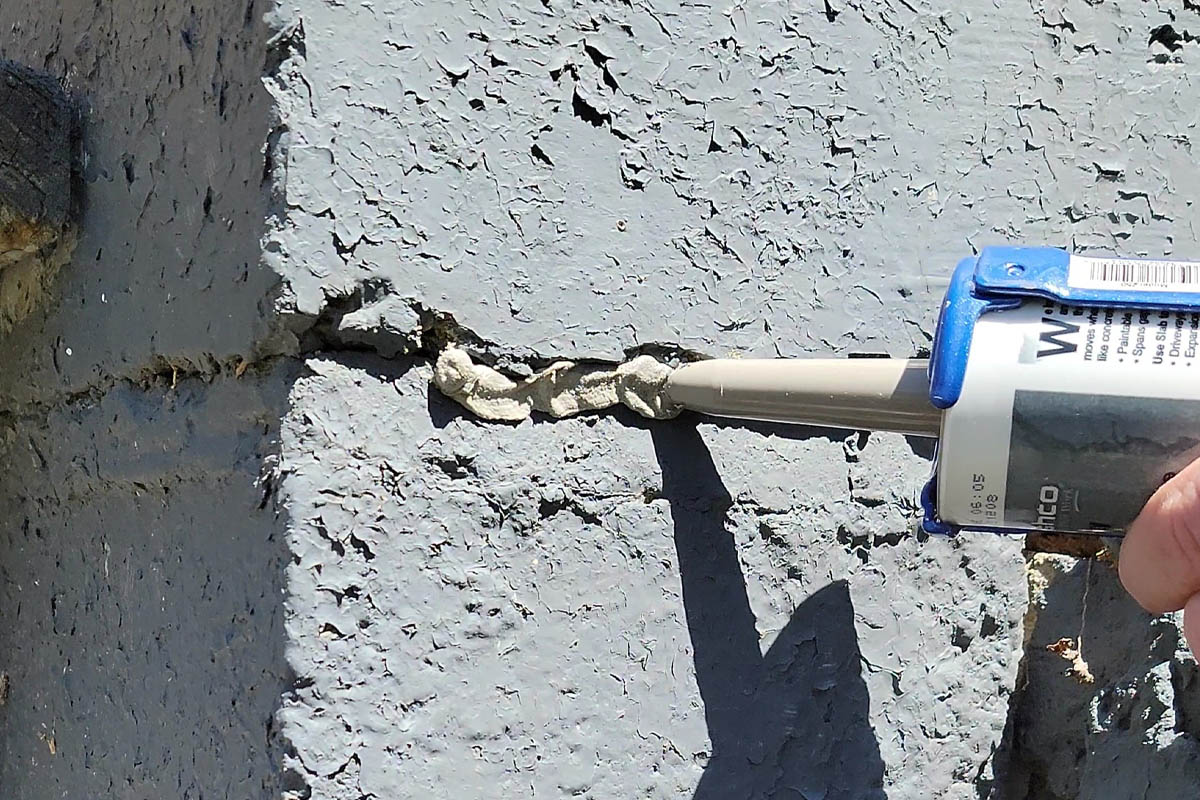
How We Tested the Best Exterior Caulks
When we decided to put together a guide on the best exterior caulks, we wanted to make sure we’d only be suggesting the very best products. We called upon our experiences as DIYers and pros to round up products we know and trust.
We consulted experts for their take on what to look for in exterior caulk. One such expert—Bill Nishanian, owner of Nash Painting in Nashville, Tennessee—advised us on a few things to consider when picking out exterior caulk: “Look for paintable, flexible, high-adhesion, and mold-and-mildew-resistant caulk that is not prone to cracking and crumbling.”
Once we had products that we felt met our criteria, we performed hands-on testing. First, we set up a small experiment to see how easy each product was to apply, and how long it would take to dry compared to the manufacturer’s suggestions. Then, we took these products to work, caulking outside windows, cracks or gaps in concrete, brick, gutters, and more, taking note of how each performed.
By the end of the test, we had a solid idea of which caulks were the best, and for which jobs they were best suited.
What to Consider When Choosing Exterior Caulk
When choosing the best exterior caulk to seal windows, doors, and siding, there are some factors to consider, such as product durability, how easy it is to use, and how long it takes to cure. Here are the key considerations to look at when selecting an exterior caulk.
Types of Exterior Caulk
Several different types of caulk are available, including latex, acrylic, silicone, polyurethane, and butyl rubber exterior caulk. Each type has its pros and cons, so it’s a good idea to get familiar with the available options to determine which is best for a given project.
Exterior Latex Caulk
Using a latex base for an exterior caulk is a good option for regions with relatively consistent temperatures throughout the year. The reason for this is that once an exterior latex caulk cures, it no longer expands or contracts with the material around it. While it’s possible to paint latex caulk, the paint may crack and flake during extreme temperature changes.
Latex exterior caulk is also typically the least expensive and requires more frequent replacing than other types of caulk to remain effective.
Exterior Acrylic Latex Caulk
For a longer-lasting product than simple latex caulk but something that is still easy to use, acrylic latex caulk may be a good choice. This formula is also more water-resistant than regular latex, providing a better seal against moisture to protect a home from the elements.
Acrylic latex exterior caulk is a popular choice for many materials, including metal, wood, and tile, and comes at a decent price. However, like latex caulk, it will shrink during the curing process and doesn’t expand or contract in response to temperature change. It can take paint, but the paint may end up with cracking and peeling problems.
Exterior Silicone Caulk
Exterior silicone caulk is the most common type of exterior caulk because of its incredible durability and water resistance. Silicone is also a very flexible material, even after it cures, making it an ideal option for sealing drafty windows and doors. This type of exterior caulk won’t typically take paint well, though many manufacturers offer several different color options.
However, when working with silicone caulk, keep in mind that it doesn’t typically seal well to wood and it can be very difficult to remove the caulk after applications. Silicone is also more difficult to work with than either latex or acrylic latex caulk, so DIYers will want to take their time and test out the flow of the caulk before applying the first bead.
Exterior Polyurethane Caulk
Polyurethane is one of the best materials to use for sealing the exterior of a home. This exterior caulk is UV-resistant, so DIYers won’t have to look at ugly yellowing over time on what was once a clear bead of caulking. Exterior polyurethane caulk also has similar flexibility to silicone, allowing it to absorb impact damage or expand and contract with ambient temperatures.
Polyurethane caulk can take paint, allowing it to give a home a flawless aesthetic. And it is great for sealing together different types of materials, such as metal and wood or wood and glass. However, it is very thick and potentially difficult to work with for DIYers who don’t have experience with a caulking gun. It’s also one of the more expensive exterior caulks.
Butyl Rubber Exterior Caulk
Because of its UV resistance, butyl rubber caulk is primarily for commercial or industrial settings and is used for sealing exterior locations commonly exposed to direct sunlight. This type of exterior caulk is also highly flexible, making it a good option for sealing gutters, chimney flashings, and housing foundations where moisture accumulation and movement are common.
DIYers can apply butyl rubber exterior caulk in both cold and hot temperatures, so they won’t have to wait for it to warm up or cool down to waterproof their home. However, to adequately remove stuck-on butyl rubber, a solvent, like paint thinner, is typically necessary.
Durability
Some areas around a home may go untouched by anyone for years, but they also see constant exposure to powerful wind, rain, hail, and possibly snow. For this reason, DIYers will want to ensure that they are investing in a product with the durability necessary for the application area.
Latex and acrylic latex are the least durable exterior caulks because once cured, they don’t expand and contract. This rigidity causes them to break down much sooner than silicone, polyurethane, or butyl rubber exterior caulk. Silicone has better water resistance than polyurethane but doesn’t adhere well to wood, while polyurethane works with most materials, even forming effective seals between two different materials.
Usability
Another important factor to consider when selecting an exterior caulk is how easy it is to use the product. Most caulk products involve placing a tube into a caulking gun and squeezing the trigger until the caulk is pushed out of the tip of the tube. It’s important to direct the tip along the seam while squeezing the caulk out of the tube.
However, ease is dependent upon the viscosity and adhesion quality of the exterior caulk. Application is more difficult with dense products like butyl rubber, polyurethane, and silicone because it is harder to control the flow of the caulk through the tip of the tube. Latex and acrylic latex caulk both flow relatively easily from the tube, but it’s also easy to apply too much. Luckily, they’re easy to remove without much mess.
Color
Most exterior caulks come in a clear or white finish, but some products may offer a selection of color choices to match the caulk bead to the home’s palette. Color is an important factor to consider when choosing a silicone caulk, as paint does not stick to 100 percent silicone caulk.
While it’s possible to paint latex and acrylic latex, the paint may end up cracking and peeling; these caulks are not flexible enough to expand and contract with the surrounding materials as the temperature changes. Polyurethane is a good option for painting the caulk bead, but in most cases, a clear or white bead of caulk blends in with a home’s exterior.
Curing Time
The curing time of an exterior caulk product is the length of time it takes for the entire bead of caulk to fully dry from the exterior to the center of the bead. Curing time can differ greatly between individual products. To determine how long it will take for the caulk bead to fully cure, refer to the manufacturer’s directions.
Typically, an exterior caulk product dries within 30 minutes to 1 hour but can take between 8 hours to 6 days to fully cure depending on the type of caulk, the location, the humidity or moisture in the area, and the amount of caulking used. A very thick bead also takes significantly longer to dry through to the center.
Tips for Using Exterior Caulk
Adding a line of caulk along siding or the frame of a window seems like a quick and simple process. But expert John Mazzuca, who has 25 years of experience in construction as a home builder and owns Gambrick Construction in Point Pleasant, New Jersey, believes that the process is more complicated than that. When beginning to use exterior caulk, Mazzuca advises that shoppers “cut the tip of the caulk very thin so you can squeeze material deep into the cracks. Just applying some caulk on the surface isn’t enough; ideally you want to push it to the base of the gap so water and air can’t penetrate.”
Next, if a DIYer doesn’t remove the old caulk before beginning, the new exterior caulk will never properly seal the gap. Remove the old caulk with a utility knife and a putty knife for a clean surface to carefully apply the new bead.
When applying the bead of caulk, be sure to grip the caulking gun with both hands to prevent shaking, slipping, or any other incidental movement that may cause a loss of control and make a mess.
Don’t use caulk for gaps that measure more than ¼ inch in width. This is because the consistency of exterior caulk is not firm enough to retain its form in a large space, causing it to sag out of the gap and create an unnecessary mess. For gaps larger than ¼ inch, use a foam backing rod to provide adequate filler and support for the bead of caulking.
- When applying an exterior caulk, remove the old caulk beforehand or the new caulk will not adhere properly.
- Use both hands to run a bead of caulk to ensure it is applied correctly.
- Don’t use caulk as a filler for gaps that are more than ¼-inch wide.
FAQs
That’s a lot of information on the best exterior caulks, but you may still have questions. This section aims to help, as it’s a collection of the most frequently asked questions about exterior caulks.
This depends on the type of caulk being used, as some products are specifically designed to be nontoxic. However, most exterior caulk products would contain harmful ingredients if swallowed, and the fumes from the caulk could also pose a danger if you use it in an enclosed space, like a garage or an enclosed porch.
Yes, you can get exterior caulk that is designed to work on painted and unpainted wood. This caulk also adapts to the swelling and shrinking of wood so the seal remains effective despite the temperature, humidity, and precipitation changes.
For exterior window caulking, you can follow these simple steps.
1. Begin by removing the old caulk from around the window frames.
2. Prepare the surface by removing any debris or old paint that may hinder adhesion and washing the area, ensuring it is dry before beginning to apply the caulk.
3. Press the tip of the caulking gun firmly against one corner of the window and apply a continuous bead, thick enough to fill the gap, all the way to the next corner.
4. Repeat step three for all four sides of the window.
5. Use a damp object to smooth over the sealant and to remove any additional caulk.
6. Allow the caulk to cure over the next 24 hours.
To caulk the exterior siding, follow these steps.
1. Remove the old caulk from the siding.
2. Clean the surface by removing any debris or old paint that may hinder adhesion and washing the area.
3. Dry the siding with a rag before beginning to apply the caulk to ensure that all moisture has been removed.
4. Use the caulking gun to apply a continuous bead along the siding to fill the gap.
5. Repeat step four for all siding seams you want to caulk.
6. Use a damp object to smooth over the sealant and to remove any additional caulk.
7. Allow the caulk to cure over the next 24 hours.
Use a utility knife or putty knife to remove the old caulk, and pull it out with your finger or with pliers. Use the putty knife to scrape off the remaining caulk, and then sand down the surface, if necessary, to create a clean surface for the new caulk to be applied.
Exterior caulk typically lasts between 5 and 10 years.
No, you should not caulk over old caulk for many reasons. The old caulk may have deteriorated or lost its adhesion, allowing moisture in. It may even be moldy. Plus, caulking over old caulk will prevent you from achieving a smooth appearance. Remove all old caulk before applying a new product.
For new homes, experts recommend replacing the exterior caulk after the first year since a new house will adjust and shift during that time. For all other homes, it’s recommended every 5 years.
It depends. Some caulk is meant to be applied in warmer weather (40 to 80 degrees Fahrenheit). However, other products can be applied in very cold temperatures (even at -20 degrees Fahrenheit). Check the manufacturer’s recommendations for caulking temperature ranges.
Why Trust Bob Vila
Bob Vila has been America’s Handyman since 1979. As the host of beloved and groundbreaking TV series including “This Old House” and “Bob Vila’s Home Again,” he popularized and became synonymous with “do-it-yourself” home improvement.
Over the course of his decades-long career, Bob Vila has helped millions of people build, renovate, repair, and live better each day—a tradition that continues today with expert yet accessible home advice. The Bob Vila team distills need-to-know information into project tutorials, maintenance guides, tool 101s, and more. These home and garden experts then thoroughly research, vet, and recommend products that support homeowners, renters, DIYers, and professionals in their to-do lists.
Meet the Tester
Tom Scalisi is a full-time DIY and construction writer for many of the largest websites in the industry, including BobVila.com, This Old House, Family Handyman, and Forbes. He also owns and operates a pest control blog, RiddaBugs.com.
Additional research provided by Timothy Dale.
